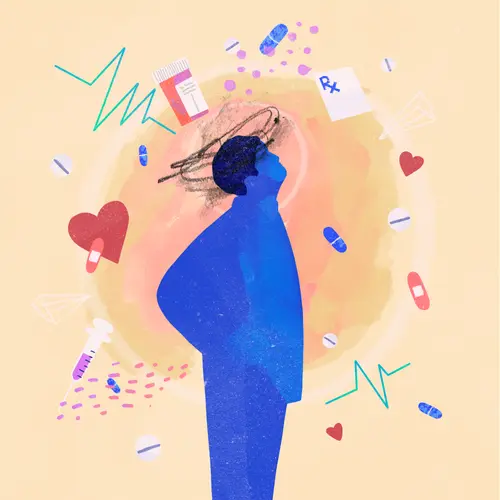What Are the Symptoms of Cholesterol Problems?
A high level of cholesterol in the blood doesn't have obvious symptoms, but it can increase your risk for conditions that do have symptoms, including angina (chest pain caused by heart disease), high blood pressure, stroke, and other circulatory ailments. Also:
What You Can Do
Learn the basics: “Your cholesterol” isn’t just one number, but several that together give your doctor a “lipid profile.” Unhealthy levels are linked to hardening of the arteries, which can cause heart disease, heart attack, and stroke. Your numbers include “bad” (LDL) and “good” (HDL) cholesterol, and triglycerides. Armed with this knowledge, and with the help and guidance of your doctor, you can start to understand and manage your own levels.
Get tested: Because unhealthy cholesterol numbers often don’t cause symptoms, especially at first, it’s important to get tested. You can be slim and feel healthy and still have a cholesterol problem. Once you know there’s a problem, you can try to change it through diet, lifestyle, and, if necessary, medication. But you’re unlikely to do that if you don’t know about it. If you’re 20 or older, you should get your levels checked (a simple blood test) every 4 to 6 years. Your doctor should test you more often if you’re overweight or diabetic or you have heart disease.
Exercise: Regular exercise is one of the best ways to control your cholesterol. You don’t have to run a marathon. A half-hour or so of brisk walking, swimming, or dancing three or four times a week should do the trick. If you’re short on time, you can break it into 10-minute increments throughout the day. Resistance training -- pushups, pullups, weights -- may help too.
Don’t smoke:Smoking lowers good cholesterol, which means you keep more of the bad stuff, LDL. And it’s linked to high blood pressure, diabetes, and heart disease. You can improve your cholesterol levels and help protect your arteries if you quit. Even if you’re a nonsmoker, it can help to avoid secondhand smoke.
Maintain a healthy weight: Carrying too much weight, especially “visceral” fat around your belly, can raise LDL and lower HDL. In general, a waist measurement of 35 inches or more for women and 40 inches or more for men could be a sign of trouble. But only your doctor can say if that rule works in your case. You may notice an “apple shape” because of the way you get larger in your middle more than other areas. But lose just 10% of your weight, and you could really help your numbers, possibly bringing them back to healthy levels. Talk to your doctor about the best diet and exercise program to help you lose weight.
Limit saturated fat: This comes from beef, pork, lamb, and full-fat dairy like butter, cream, milk, cheese, and yogurt, as well as tropical oils like palm and coconut. All can raise your LDL or “bad” cholesterol. It can help to trim visible fat from meats, and to look for skim milk and low-fat yogurt. You shouldn’t get more than 6% of your calories from saturated fat if your LDL is high. Avoid trans fats altogether, too.
Treat underlying conditions: It’s important to understand and treat conditions linked to a risky cholesterol or lipid profile like diabetes or obesity. Treat the condition itself, and you may help improve your cholesterol numbers as well. Your doctor can help screen and treat these conditions. Make sure you tell your doctor about all the medications you take and follow your treatment plan. Don’t skip doses or change your treatment plan unless you talk to your doctor first.
Call Your Doctor About Heart Disease If:
- You find soft, yellowish skin growths on yourself or on your children. Ask about being tested for high cholesterol.
- You develop symptoms of heart disease, stroke, or atherosclerosis in other blood vessels, such as left-sided chest pain, pressure, or fullness; dizziness; unsteady gait; slurred speech; or pain in the lower legs. Any of these conditions may be linked to high cholesterol, and each requires medical help right away.

